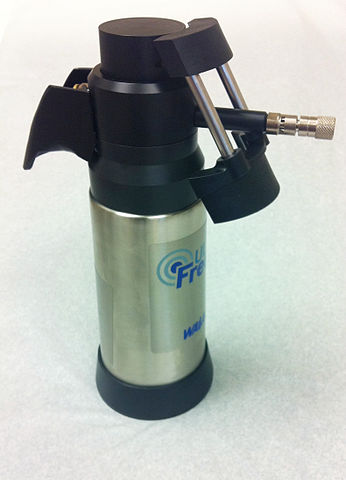
With advancements in modern technologies, treating damaged biological tissue has become a quicker, less painful process. Techniques, like cryotherapy, can be used to treat internal and external tissue damage, while causing relatively little discomfort for patients.
What Is Cryotherapy?
Cryotherapy is a form of treatment that involves the use of low temperatures to treat damaged tissues. Also referred to as cryosurgery, this superfreezing method removes heat from the body by freezing the diseased tissues and destroying them. In most cases, doctors use liquid nitrogen as the freezing agent, applying it to a cotton swab or using a probe that includes the liquid within it. Once the liquid nitrogen is applied, the tissue will freeze. The damaged tissue will then thaw and fall off. In addition to a lack of side effects, this procedure is also valued for its efficiency, as it can often be performed in a healthcare provider’s office in just a short period of time.

Liquid nitrogen is typically sprayed with a cryogun, such as this one, or dabbed on with cotton to freeze the damaged tissue. Image credit: “Cryogun” by Warfieldian – Own work. Licensed under Creative Commons Attribution-Share Alike 3.0 via Wikimedia Commons.
Understanding the Body’s Response
Why does the damaged tissue respond as it does to the applied freezing liquid? The answer is that any living tissue will have difficulty thriving in such extreme cold. As the temperature is lowered, the blood supply to the cells in the damaged tissue decreases. The quick application of this hypothermic temperature maximizes the destruction of the cells within the damaged tissue. With the treatment applied to a limited area, surrounding healthy tissue remains relatively unharmed.
Areas of Treatment
Cryotherapy can be used in the treatment of both benign and malignant tissue damage. In most cases, this method is used in the removal of warts, moles, and skin tags. Along with destroying the skin growth, this form of therapy also helps ensure the preservation of healthy tissue around the damaged area. These external treatments typically require the use of the cotton swab to apply the liquid nitrogen.
The treatment of internal tumors is another area where this procedure is used. With the use of a cryoprobe, the liquid nitrogen is applied to the damaged tissue. To help prevent the risk of damage to healthy tissue in these cases, doctors use an ultrasound or MRI to guide the probe through the body as it freezes the tissue. Areas of internal treatment include prostate cancer, liver cancer, and cervical disorders.
Further Reading
- Article: “Cryosurgery for Common Skin Conditions“




Comments (0)